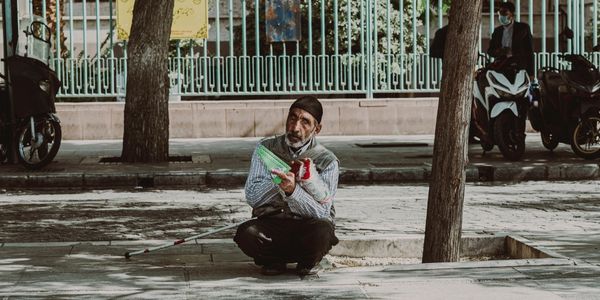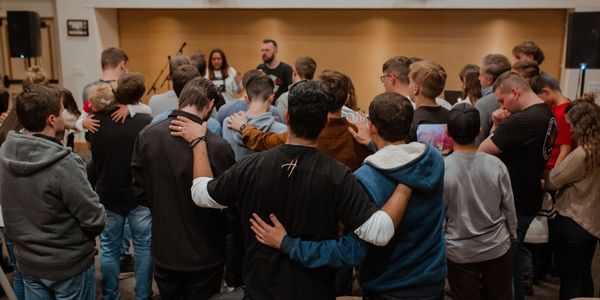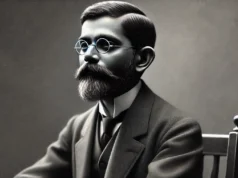
The story of the man born blind in John 9:1-41 can be considered as a representative narrative that demonstrates the experiences of the disabled and marginal sections of people in the First Century AD context.
The followers of Jesus were considered a marginal group by mainstream society. They had to undergo challenging and vulnerable situations even at the risk of their lives.
The narrator of John’s Gospel creatively introduces life/eternal life as a central theme to facilitate the faith and discipleship concerns of the followers of Jesus.
The introduction of Jesus as the logos (Word), source of life, and light is persuasive throughout the Fourth Gospel.
The man born blind shares his experiences of disability and shows how the stigma of disability was attached to him even after his healing.
John Swinton comments, “Without the hermeneutical voice of people living with disabilities, the revelation that God desires to impart to us remains lacking . . . Disabled human bodies can carry powerful messages of redemption just-as-they-are. To see such things we need to read Scripture in a quite particular way.”
Christian mission is all about bringing light in the dark world by recreating the world order in Christ.
The story of the man born blind in John’s Gospel develops in a dramatic way. As a continuation of chapters 7 and 8, the event of the man born blind also happens during the Feast of Tabernacles.
In 8:59, we see how enmity develops toward Jesus, and as a result, he goes ‘out of the temple.’ In 9:1, as he walks along, he saw (Gk. eiden) a man born blind.
The portrayal of Jesus’s ability to see the congenital disability of the man is intentional as Jesus is introduced as the light of the world (v. 5).
Jesus as a ‘walking teacher’ resembles in many ways the Peripatetic teachers from the Greek tradition (v. 1; cf. 1:36).
The question of the disciples to Jesus about the one who was born blind draws the attention of the reader. A man who was fully in darkness meets the light of the world.
The disciples of Jesus ask him a question from their Jewish knowledge: “Whether it happened because of this man’s sin or because of his parents’ sin?” (v. 2).
Usually, the Jews connect people’s illnesses with demonic powers and sinfulness. If the diseased were considered demonic and sinful, the disabled would have been considered terrible sinners.
In the case of the invalid person in chapter 5, Jesus says to him, “Do not sin anymore, so that nothing worse happens to you” (5:14); but, here, Jesus says to the disciples, “Neither this man nor his parents sinned; he was born blind so that God’s work might be revealed in him” (v. 3).
The divine ability is going to be manifested in the context of human disability. The divine light shines when people are in darkness and God appears as the giver of life when people are in the valley of death.

The invalid person in chapter 5 was suffering because of his sinfulness; but, the man born blind suffered neither because of his own sinfulness nor because of his parents’ sinfulness.
But people weighed down his disability so long in the public square with the conception that it happened due to his/ his parents’ sinfulness. Hence he was considered a downtrodden and untouchable man.
People considered ability and disability on the basis of human physical conditions and other connected factors.
They disregard the fact that God is a God of love and mercy. God has a preferential option toward the poor, disabled, and dehumanized.
The irony of ability and disability comes to the foreground through the narrative. The Jews claim that they have physical sight and spiritual foresight, but Jesus proves that though they physically see, they lack spiritual insight.
The Jews consider both Jesus and the man born blind as sinners, but Jesus proves that the Jews themselves are sinners.
The Jews consider the man born blind as a person with disabilities, religiously sinful, and socially untouchable, but Jesus enabled him to see everything and gave him new religious hope.
The Jews consider the Saviour of the world as a sinner, but Jesus proves that the Jews are blind guides.
The church should be a community of solidarity; we need to love, care, appreciate, and pray for others irrespective of all human-made boundaries.
Though they claim they are a protecting community, they never protected the man (but cast him out of the Synagogue). Though they are the legal authorities, they never executed the right judgment for people.
All the above ironies and contrasts prove that the Jews were people with an ample number of shortcomings and disabilities.
The narrative is not simply an event in which Jesus meets a man and heals him from blindness, but it is also a story of Jews’ blindness.
The story as a whole turns out as a masterpiece in which the irony of ability and disability is stated persuasively.
The event of healing the man born blind cannot merely be treated as a restoration story, but rather it can be considered as an activity of new creation.
The man’s new being and identity are emphasized through the creative mission of Jesus (John 3:3; 2 Cor 5:17). The man experiences newness in his physical, spiritual, psychological, and theological areas of life.
On the one hand, Jesus affirms that he is the light of the world (8:12; 9:5); on the other hand, he models a new community in him as the light of the world (Matthew 5:14).
The man born blind becomes an illuminating light in the world to remove darkness from the world.
The neighbors do not agree on the identity of the man (vv. 8-9). The Pharisees were divided on the identity of Jesus (v. 16). They debate among themselves about their own identities (v. 40).
All these show how people were lacking proper knowledge and were deficient in seeing things adequately. But the man progresses in all levels of vision and thus stands out as a model disciple.
Christian mission is all about bringing light in the dark world by recreating the world order in Christ.

Christian mission should focus on areas such as recreating people with physical and spiritual disabilities, removing poverty, opening educational avenues to the underprivileged, and liberating the oppressed communities.
By doing all these, the church can reflect the heavenly glory in the world.
In the pastoral and ecclesiastical context, the blind, deaf, mute, and all underprivileged people should get special attention and care.
Though the Asian church is open toward people with disabilities, transgender communities, red street workers, underprivileged children, and poor and ostracized, the church has to travel further to bring lasting effects among the dehumanized people and all those who are at the periphery.
Asian churches should stand out as an alternative community in the world. Through its various kingdom activities, the church can demonstrate the radiating light of Jesus in the world.
In the contemporary Asian context, the irony of ability and disability continues to prevail in the socio-religious and politico-economic contextual realities.
Ability is mostly considered on the basis of physical wellness and other associated factors, but without considering the wholistic aspects of human capacities.
Similarly, disability is attributed to people solely based on physical impairments, and in that sense, the ability concerns of people are submerged into the disability factors.
At the personal, ecclesiastical, and societal levels, there should be awareness among people that no one is able to judge the ‘other’ as disabled.
The divine light shines when people are in darkness and God appears as the giver of life when people are in the valley of death.
Abilities and disabilities are part and parcel of human existence. Physical disability should be diagnosed, cared for, and sympathized with; but, that does not mean that those without physical disability are ‘super-humans.’
All need each others’ love, care, protection, and appreciation. We need to treat people out of love irrespective of their abilities and disabilities.
The God of ability accommodated the world of disabilities in order to embrace all those who fell short of the glory of God (hence, disabled humanity).
The irony of ability and disability continues in our world. It is the mission of the church to accept people with disabilities as they are, make the church and its community accessible to people with special needs, accommodate them into our lives, and accompany them to provide special care for them.
The church should be a community of solidarity; we need to love, care, appreciate, and pray for others irrespective of all human-made boundaries.
Jesus’s identity as the light of the world is brought to the foreground in the narrative (v. 5b; cf. 8:12). A demonstration of his identity as the light of the world is made obvious through leading a person from darkness to light.
The tenure of Jesus’s life in the world is declared as the time of the ‘light’ and his departure from this world will bring an experience of ‘darkness’ (v. 5). His continuous identification as the ‘light of the world during the festival of light (i.e., the feast of the Tabernacles) is intentional.
As the man born blind became an illuminating light before the world, the church has a greater role to brighten its light to remove the darkness of the world.
Photo by Quang Nguyen Vinh; Photo by Matin Hosseini on Unsplash; Photo by adrianna geo on Unsplash







